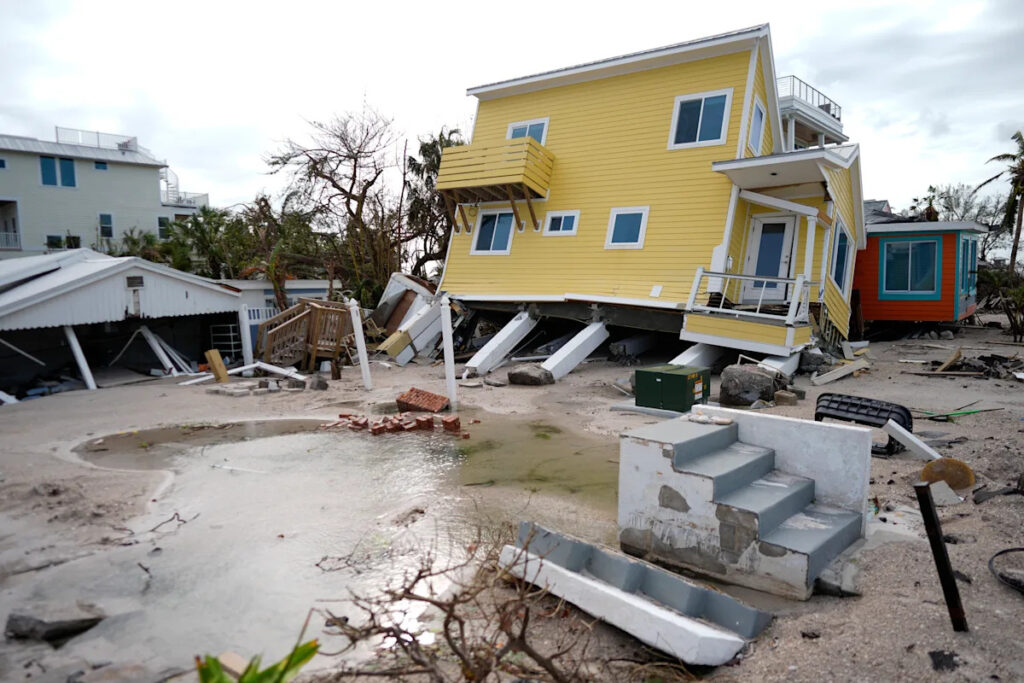The first storm of the 2025 Atlantic hurricane season — Andrea — was announced by the National Hurricane Center on Tuesday. This marks the beginning of what forecasters at the National Weather Service predict will be an above-normal year for hurricane activity in the Atlantic Ocean.
“NOAA’s outlook for the 2025 Atlantic hurricane season, which goes from June 1 to November 30, predicts a 30% chance of a near-normal season, a 60% chance of an above-normal season, and a 10% chance of a below-normal season,” the National Weather Service said in a May news release.
Here’s how to protect yourself before, during and after a hurricane, based on information from the American Red Cross and the National Weather Service.
Before a hurricane
Know your zone: If you live near the Gulf or Atlantic Coasts, find out if you live in a hurricane evacuation zone by contacting your local government or emergency management office.
Know the difference between watches and warnings: A watch means “be prepared,” while a warning means “take action!”
Establish an emergency plan: Talk with your family and friends ahead of time to determine how you’ll stay in contact with each other, a plan to evacuate and a plan to shelter in place in the event of an emergency.
Evacuation:
If local officials advise you to evacuate, you should do so immediately.
If you’re in an area that is likely to flood, designate a location on higher ground that you can move to before floodwater reaches you.
Allow plenty of time if you need help leaving your home or rely on public transportation.
Know where you’ll go, how you’ll get there and where you will stay.
Shelter in place:
If you’re not ordered to evacuate, gather supplies and plan to live without power, water, gas, phone and internet for a long time.
Locate a safe place to shelter inside, away from windows, skylights and glass doors. Put as many walls between you and the outside as possible. This includes a small, interior room, closet or hallway on the lowest level not likely to flood.
Assemble an emergency supplies kit: This includes water, flashlights, portable cellphone chargers, generators and storm shutters. The National Weather Service recommends this list of supplies.
Have go bags ready: Pack essential items like clothing, medication, toiletries, including younger and older family members and food for pets.
Protect your home:
Review your homeowner’s insurance to see if you have adequate coverage.
Cover your home’s windows. Permanent storm shutters offer the best protection, according to the National Weather Service. You can also board up windows with plywood and buy supplies ahead of the pre-storm rush.
Bring in any items that could cause damage by high winds, like lawn furniture or trash cans. Anchor any items that cannot be brought inside, like gas grills or propane tanks.
Trim or remove any trees that are close enough to fall on your home.
During a hurricane
Stay informed: Monitor local news and check the website of the local office of the National Weather Service and local government/emergency management office to see what types of emergencies are unfolding and if you need to take action, including any storm surge watches or warnings.
Listen to local officials: If you are advised to evacuate by local officials, do so immediately. Never walk, swim or drive through floodwater.
Be wary of a sudden calm during the storm: If the eye of the storm passes over your area, there will be a short period of calm before the opposite side of the storm brings hurricane-force winds.
After a hurricane
Continue to stay informed: Listen to local news and officials for the latest updates. If you evacuate, only return when officials say it’s safe to do so.
Safety:
Only drive if it’s necessary, and stay alert for any downed power lines and wires because they can electrocute you.
Turn around, don’t drown! Seemingly calm and shallow floodwater can be potentially deadly.
Avoid touching floodwater because it could contain sewage, bacteria or chemicals that could make you sick.
Never use a portable generator inside your home or garage, as it could cause carbon monoxide poisoning.
When in doubt, throw it out! If you lost power, throw out any food that got wet or warm if the refrigerator lost power.
Monitor updates from your local health department about drinking water safety.
Carefully walk around the outside of your home to report any loose power lines, gas leaks and structural damage.
If the power is out, use battery-powered flashlights instead of candles.
When cleaning up, wear protective equipment like gloves, goggles and boots.

